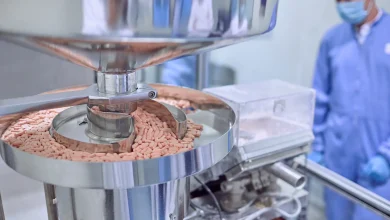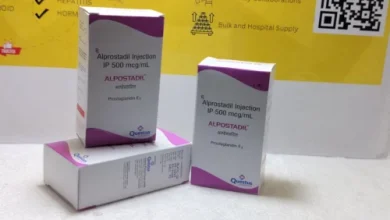Asthma Inhalers Explained: Understanding the Different Types and How They Work

Asthma is a common respiratory condition that affects millions of people worldwide. It is characterized by inflammation and narrowing of the airways, leading to symptoms like wheezing, shortness of breath, chest tightness, and coughing. Managing asthma effectively is crucial to prevent flare-ups and maintain a good quality of life. One of the primary tools in asthma management is the inhaler, a device that delivers medication directly to the lungs. This article will explore the different types of asthma inhalers, how they work, and their role in asthma management.
What is an Asthma Inhaler?
The Role of Inhalers in Asthma Management
Inhalers are handheld devices designed to deliver medication directly to the lungs, where it is most needed. Unlike oral medications, which must pass through the digestive system before entering the bloodstream, inhaled medications act directly on the airways, providing rapid relief from symptoms and reducing inflammation. This targeted approach makes inhalers highly effective in managing asthma.
Why Inhalers are Essential for Asthma Patients
Inhalers are essential for asthma patients because they deliver medication in a form that is easy to use, portable, and fast-acting. The medication reaches the lungs quickly, making it an ideal solution for both immediate symptom relief and long-term asthma control. Inhalers are also designed to minimize side effects by delivering lower doses of medication directly to the lungs, rather than the entire body.
Types of Asthma Inhalers
Understanding the Different Types of Asthma Inhalers
There are several types of asthma inhalers, each with its unique features and benefits. The most common types include metered-dose inhalers (MDIs), dry powder inhalers (DPIs), and soft mist inhalers (SMIs). Understanding the differences between these inhalers is crucial for selecting the right one for your asthma management plan.
Metered-Dose Inhalers (MDIs)
What are Metered-Dose Inhalers?
Metered-dose inhalers (MDIs) are the most commonly used type of inhaler. They deliver a specific amount of medication in the form of an aerosol spray. The medication is stored in a pressurized canister, which is attached to a mouthpiece. When the user presses down on the canister, a measured dose of medication is released, and the user inhales it into their lungs.
How MDIs Work
MDIs work by delivering a fine mist of medication directly to the lungs. The user must coordinate pressing the canister and inhaling the medication at the same time. This can be challenging for some people, particularly children and the elderly. To address this issue, spacers or holding chambers can be used. These attachments help to slow down the delivery of the medication, making it easier to inhale and ensuring more medication reaches the lungs.
Benefits of MDIs
- Portability: MDIs are small, portable, and easy to carry, making them convenient for use on the go.
- Quick Relief: MDIs provide fast relief from asthma symptoms, making them ideal for use during an asthma attack.
- Versatility: MDIs can be used with a wide range of medications, including bronchodilators and corticosteroids.
Dry Powder Inhalers (DPIs)
What are Dry Powder Inhalers?
Dry powder inhalers (DPIs) deliver medication in the form of a dry powder, rather than an aerosol spray. The medication is contained in a capsule or blister pack within the inhaler. When the user inhales through the mouthpiece, the medication is released and inhaled into the lungs.
How DPIs Work
DPIs rely on the user’s inhalation effort to deliver the medication. When the user inhales deeply and quickly through the mouthpiece, the medication is released as a dry powder, which is then inhaled into the lungs. This type of inhaler does not require the same level of coordination as MDIs, making it easier to use for some patients.
Benefits of DPIs
- Ease of Use: DPIs are easier to use than MDIs, as they do not require coordination between pressing the canister and inhaling.
- No Propellants: DPIs do not use propellants to deliver medication, making them an environmentally friendly option.
- Consistent Dosing: DPIs provide consistent dosing with each use, reducing the risk of over- or under-dosing.
Soft Mist Inhalers (SMIs)
What are Soft Mist Inhalers?
Soft mist inhalers (SMIs) are a newer type of inhaler that delivers medication as a fine mist. The mist is released slowly, giving the user more time to inhale the medication. SMIs are designed to be easy to use and provide a high level of lung deposition, meaning more medication reaches the lungs.
How SMIs Work
SMIs work by using a mechanical spring to release the medication as a slow-moving mist. The user inhales the mist through the mouthpiece, and the medication is delivered directly to the lungs. SMIs are designed to be used without the need for propellants, making them a more environmentally friendly option.
Benefits of SMIs
- Ease of Use: SMIs are easy to use and do not require coordination between inhalation and medication release.
- High Lung Deposition: SMIs deliver more medication to the lungs, increasing the effectiveness of the treatment.
- No Propellants: SMIs do not use propellants, making them a more sustainable option.
Nebulizers
What are Nebulizers?
Nebulizers are devices that turn liquid asthma medication into a fine mist that can be inhaled through a mask or mouthpiece. Nebulizers are often used for young children, the elderly, or individuals with severe asthma who cannot use other types of inhalers.
How Nebulizers Work
Nebulizers work by using a compressor to turn liquid medication into a mist. The mist is then inhaled through a mask or mouthpiece over several minutes. Nebulizers are often used for more severe asthma cases, as they can deliver larger doses of medication over a longer period.
Benefits of Nebulizers
- Ease of Use: Nebulizers do not require any coordination, making them ideal for young children, the elderly, or those with severe asthma.
- Larger Doses: Nebulizers can deliver larger doses of medication, making them effective for severe asthma cases.
- Customizable Treatment: Nebulizers can be used with a wide range of medications, allowing for customizable treatment plans.
Choosing the Right Inhaler
Factors to Consider When Choosing an Inhaler
Choosing the right inhaler is crucial for effective asthma management. There are several factors to consider when selecting an inhaler, including the type of medication needed, the ease of use, and the patient’s age and ability to use the inhaler correctly.
Medication Type
The type of medication needed is one of the most important factors to consider when choosing an inhaler. Asthma medications are generally classified into two categories: reliever medications and preventer medications.
Reliever Medications
Reliever medications, also known as rescue medications, provide quick relief from asthma symptoms. They work by relaxing the muscles around the airways, allowing them to open up and make breathing easier. Reliever medications are typically delivered using MDIs or DPIs.
Preventer Medications
Preventer medications, also known as controller medications, work by reducing inflammation in the airways and preventing asthma symptoms from occurring. They are usually taken daily to maintain long-term control of asthma. Preventer medications are often delivered using MDIs, DPIs, or SMIs.
Ease of Use
The ease of use is another important factor to consider when choosing an inhaler. Some inhalers require coordination between pressing the canister and inhaling, while others rely on the user’s inhalation effort to deliver the medication. It is important to choose an inhaler that the patient can use correctly to ensure effective treatment.
Coordination and Inhaler Technique
MDIs require coordination between pressing the canister and inhaling, which can be challenging for some patients. If coordination is an issue, a DPI or SMI may be a better option. Alternatively, a spacer or holding chamber can be used with an MDI to make it easier to use.
Inhalation Effort
DPIs rely on the user’s inhalation effort to deliver the medication. This means that the user must be able to inhale deeply and quickly to ensure that the medication reaches the lungs. If the user has difficulty with this, an MDI or SMI may be a better option.
Age and Ability
The patient’s age and ability to use the asthma inhalers correctly are also important factors to consider. Young children and the elderly may have difficulty using certain types of inhalers, such as MDIs. In these cases, a nebulizer or a spacer may be a better option.
Proper Inhaler Technique
The Importance of Proper Inhaler Technique
Using an inhaler correctly is crucial for ensuring that the medication is delivered to the lungs and not wasted. Unfortunately, many people do not use their inhalers correctly, which can reduce the effectiveness of the medication and lead to poor asthma control.
Common Mistakes in Inhaler Use
Common mistakes in inhaler use include not shaking the inhaler before use, not exhaling fully before inhaling the medication, and not holding the breath after inhaling. These mistakes can reduce the amount of medication that reaches the lungs and decrease the effectiveness of the treatment.
Tips for Correct Inhaler Use
To ensure that you are using your inhaler correctly, follow these tips:
- Shake the inhaler: If you are using an MDI, shake it well before each use to mix the medication.
- Exhale fully: Exhale fully before inhaling the medication to ensure that your lungs are empty and ready to receive the medication.
- Inhale slowly and deeply: Inhale the medication slowly and deeply to ensure that it reaches your lungs.
- Hold your breath: Hold your breath for 10 seconds after inhaling the medication to allow it to settle in your lungs.
Conclusion
Asthma inhalers are essential tools in the management of asthma, providing fast and effective relief from symptoms and helping to maintain long-term control. Understanding the different types of inhalers, how they work, and how to use them correctly is crucial for optimizing asthma treatment. By choosing the right inhaler and using it correctly, asthma patients can achieve better control of their symptoms and enjoy a healthier, more active life.




